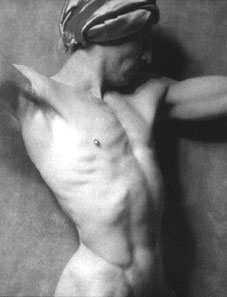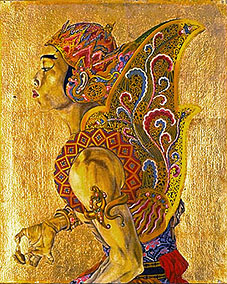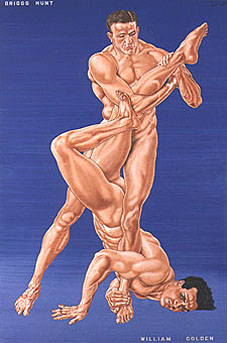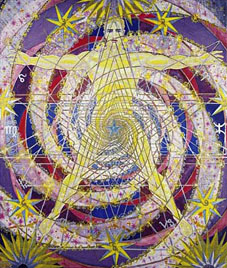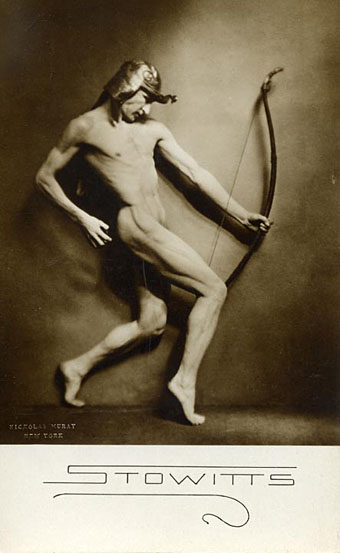
Stowitts photographed by Nickolas Muray.
The title is from two gallery pages at the Queer Arts Resource which runs through a history of the old subterfuge whereby homoerotic pictures were decorated to look suitably Greek or Roman. This seldom fooled anyone, even in Oscar Wilde’s day, but it no doubt helped to keep the studios out of the law courts. Amid the plaster columns and antique props there’s a card I hadn’t seen before promoting dancer and artist Hubert Stowitts whose role as a satyr is one of the most memorable moments in Rex Ingram’s 1926 film of The Magician.
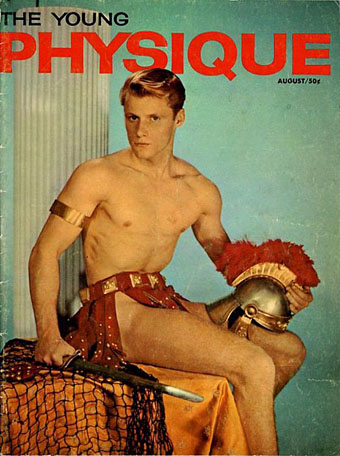
Jim Galahad.
Also at Queer Arts is a copy of The Dying Gaul with a model who’s in the peak of health and a lot more well-hung than most Greek sculptures.

This picture is something I found ages ago on a lost web page and now have a tenuous reason to post here. What looks like erotica is actually a fashion shoot (and he’s wearing swimming trunks) but it shows how the Classical mode persists. He looks like he wants to see more of Jim’s sword…
Elsewhere on { feuilleton }
• The gay artists archive
• The men with swords archive

